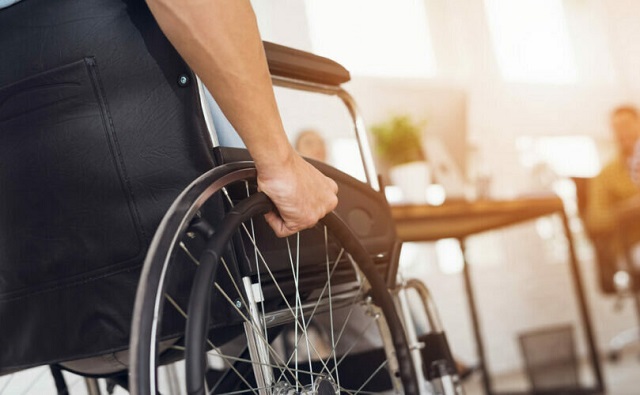MAiD
Even Canadian leftists are starting to recognize the ‘dystopian’ nature of MAiD

From LifeSiteNews
Euthanasia based on poverty or disability is rarely based on personal choice and autonomy, it is horrifying, it is profane, it is the outcome of a failed social welfare system, and it is indefensible.
David Moscrop wrote an excellent article that was published by Jacobin Magazine on May 2, 2024. Jacobin is an ideologically left magazine, which is concerned about Canada killing people with disabilities and the poor by euthanasia, known as MAiD (Medical Assistance in Dying).
The article begins with this quote:
Canada boasts one of the world’s highest assisted-death rates, supposedly enabling the terminally ill to die with dignity. However, this suicide program increasingly resembles a dystopian replacement for care services, exchanging social welfare for euthanasia.
Moscrop tells the story of Normand Meunier, the quadriplegic man in Québec who died by euthanasia after suffering from horrific neglect. Moscrop writes:
For want of a mattress, a man is dead. That’s the story, in sum, of a quadriplegic man who chose to end his life in January through medically assisted death. Normand Meunier’s story, as reported by the CBC, began with a visit to a Quebec hospital due to a respiratory virus. Meunier subsequently developed a painful bedsore after being left without access to a mattress to accommodate his needs. Thereafter, he applied to Canada’s Medical Assistance in Dying (MAiD) program.
As Rachel Watts writes in her report, Meunier spent ninety-five hours on a stretcher in the emergency room – just hours short of four days. The bedsore he developed ‘eventually worsened to the point where bone and muscle were exposed and visible – making his recovery and prognosis bleak.’ The man who ‘didn’t want to be a burden’ chose to die at home. An internal investigation into the matter is underway.
I find it interesting that the article states that Meunier chose to die by euthanasia when in fact he was put into an untenable situation. Moscrop then reinforces the concerns of the disability community:
Disability and other advocates have been warning us for years that MAiD puts people at risk. They warned that the risk of people choosing death – because it’s easier than fighting to survive in a system that impoverishes people, and disproportionately does so to those who are disabled – is real. Underinvestment in medical care will push people up to and beyond the brink, which means some will choose to die instead of ‘burden’ their loved ones or society at large. They were right.
Moscrop comments on how euthanasia is the outcome of a failed social welfare state:
A libertarian ethos partially underwrote the fact that not many people blinked when MAiD was initially rolled out. Taking a more expansive view of rights, many of those not swayed by rote libertarianism were convinced that concerns over bodily autonomy and compassion were reason enough to adopt MAiD. However, in the absence of a robust welfare state, and in the face of structural poverty and discrimination, particularly toward disabled people, there is no world in which the MAiD program can be understood to be ‘progressive.’
Indeed, last year, Jeremy Appel argued that MAiD was ‘beginning to look like a dystopian end run around the cost of providing social welfare.’ Initially supportive, he changed his mind on MAiD as he considered that the decisions people make are not strictly speaking individual but are instead collectively shaped and sometimes ‘the product of social circumstances, which are outside of their control.’ When we don’t care for one another, what do we end up with?
‘I’ve come to realize,’ wrote Appel, ‘that euthanasia in Canada represents the cynical endgame of social provisioning with the brutal logic of late-stage capitalism – we’ll starve you of the funding you need to live a dignified life [. . .] and if you don’t like it, why don’t you just kill yourself?’
READ: Young, healthy women being euthanized in the Netherlands should be a warning for Canada
Moscrop then comments on that euthanasia for psychiatric reasons has been delayed in Canada based on the lack of mental health care. He refers to the reality as grotesque and writes that this is the stuff of nightmarish science fiction. Moscrop comments on the broken social welfare system in Canada.
In Canada’s most populous province, Ontario, a recipient of disability support receives about $1,300 a month – a pittance they’re meant to stretch to cover food, shelter, and other basic needs. Ontario Works – the province’s welfare program – pays a current maximum of $733 a month. Meanwhile, rental costs for a one bedroom apartment routinely push toward an average of $2,000 a month in many cities. In April, in Toronto, a one bedroom apartment averaged almost $2,500 a month.
Moscrop challenges a statement by euthanasia activists James Downer and Susan MacDonald who stated:
Despite fears that availability of MAiD for people with terminal illness would lead to requests for MAiD driven by socioeconomic deprivation or poor service availability (e.g., palliative care), available evidence consistently indicates that MAiD is most commonly received by people of high socioeconomic status and lower support needs, and those with high involvement of palliative care.
Moscrop replies:
By their own admission, the data on this matter is imperfect. But even if it were, the fact that ‘most’ patients who choose MAiD are better off socioeconomically is beside the point. Some are not – and those ‘some’ are important. That includes a man living with Amyotrophic Lateral Sclerosis who, in 2019, chose medically assisted death because he couldn’t find adequate medical care that would also allow him to be with his son. It also includes a man whose application listed only ‘hearing loss,’ and whose brother says he was ‘basically put to death.’ This story came a year after experts raised the concern that the country’s MAiD regime was in violation of the Universal Declaration of Human Rights.
In 2022, Global News said the quiet part out loud: poverty is driving disabled Canadians to consider MAiD. Those ‘some’ who are driven to assisted death because of poverty or an inability to access adequate care deserve to live with dignity and with the resources they need to live as they wish. They should never, ever feel the pressure to choose to die because our social welfare institutions are starved and our health care system has been vandalized through years of austerity and poor management.
Moscrop then states that Canada has the resources to prevent endemic poverty and provide adequate care, that poor people being euthanized by the state is profane.
Moscrop then refers to a recent article by professor Trudo Lemmens who is a critic of Canada’s euthanasia law.
In a February piece for the Globe and Mail, University of Toronto law professor Trudo Lemmens wrote, ‘The results of our MAiD regime’s promotion of access to death as a benefit, and the trivialization of death as a harm to be protected against, are increasingly clear.’ In critiquing MAiD’s second track, which allows physician-assisted death for those who do not face ‘a reasonably foreseeable death,’ Lemmens points out that within two years of its adoption, ‘“track two”’ MAiD providers had ended already the lives of close to seven hundred disabled people, most of whom likely had years of life left.’
In raising concerns about expanding MAiD to cover mental illness, Lemmens added that ‘there are growing concerns that inadequate social and mental health care, and a failure to provide housing supports, push people to request MAiD,’ noting that ‘[a]dding mental illness as a basis for MAiD will only increase the number of people exposed to higher risks of premature death.’
Moscrop continues by referring to a commentary from disability leader Gabrielle Peters.
In 2021, Gabrielle Peters warned in Maclean’s that extending MAiD to cover those who weren’t facing an immediately foreseeable death was ‘dangerous, unsettling and deeply flawed.’ She traced the various ways in which a broader MAiD law could lead to people choosing to die in the face of austerity, adding an intersectional lens that is often missing from our discussions and debates over the issue.
She warned that we were failing to consider ‘how poverty and racism intersect with disability to create greater risk of harm, more institutional bias and barriers, additional layers of othering and dehumanization, and fewer resources for addressing any of these.’ And now here we are. We should have listened more carefully.
Moscrop ends his article by suggesting that euthanasia may be OK based on personal choice but it is indefensible when it is based on poverty.
While MAiD may be defensible as a means for individuals to exercise personal choice in how they live and how they die when facing illness and pain, it is plainly indefensible when state-induced austerity and mismanagement leads to people choosing to end their lives that have been made unnecessarily miserable. In short, we are killing people for being poor and disabled, which is horrifying.
It thus falls to proponents of MAiD to show how such deaths can be avoided, just as it falls to policymakers to build or rebuild institutions that ensure no one ever opts to end their life for lack of resources or support, which we could provide in abundance if we choose to.
I agree with most of Moscrop’s comments but I disagree with his statement that euthanasia is possibly defensible as a means of individuals exercising personal choice. Even though people with disabilities experience social devaluation in Canada, they may be still exercising personal choice when they ask to be killed.
The problem with modern writers is that they miss the fact that euthanasia is about killing people. Even if Canada had a greater level of equality, there would be people who ask to be killed based on their poverty or their concerns about homelessness.
The real concern is that Canada has given medical professionals the right in law to kill their patients. This is about people killing people.
Nonetheless Moscrop is right that euthanasia based on poverty or disability is rarely based on personal choice and autonomy, it is horrifying, it is profane, it is the outcome of a failed social welfare system, and it is indefensible.
Reprinted with permission from the Euthanasia Prevention Coalition.
MAiD
From Exception to Routine. Why Canada’s State-Assisted Suicide Regime Demands a Human-Rights Review


Ontario’s chief coroner has now confirmed, in expert reports released alongside that AP probe, that some non-terminal MAiD deaths in the province were driven by “unmet social needs” such as fear of homelessness or uninhabitable housing.
Canada’s state-assisted suicide program, called MAiD, was sold by the Liberal government as a “stringently limited, carefully monitored system,” a rare option of last resort for people at the very end of life. New data from Health Canada show that in 2024, 16,499 Canadians died by MAiD — 5.1 percent of all deaths in the country.
Does it not follow logically, from these data, that Ottawa’s original framework has, cloaked in the rhetoric of progressively humane ideals, insidiously crept into something far more sinister than what Supreme Court justices, in their wisdom, affirmed in a society-altering Charter of Rights ruling in 2015?
Prior analysis from Cardus, a Canadian faith-based think tank, documented exponential increases from 1,018 deaths in 2016 to 13,241 in 2022 — about a thirteenfold rise — and notes that MAiD has become Canada’s fifth leading cause of death, roughly tied with cerebrovascular disease and behind cancer, heart disease, and accidents.
Under current federal law, eligibility for MAiD is scheduled to expand again in 2027, when people whose sole underlying medical condition is a mental illness can join the program. A joint House of Commons–Senate committee has recommended extending MAiD to “mature minors.”
Hold on, though. Roughly one in twenty deaths in Canada is now attributed to MAiD. On those numbers alone, rather than moving ahead with this expansion agenda, an external human-rights review should come first — and it should test whether Canada’s existing system is already breaching the rights of disabled, poor and socially isolated people before any further gates are opened.
In a statement this week citing its own prior research, Cardus, a faith-based think tank, added that Health Canada’s own data underlines a massive expansion beyond the “stringently limited, carefully monitored system” of last resort cited by the Supreme Court in 2015.
“Almost 58 percent of Track 1 MAiD recipients and more than 63 percent of Track 2 recipients reported ‘emotional distress/anxiety/fear/existential suffering’ in 2024, a significant jump from around 39 percent and 35 percent respectively in 2023,” Cardus wrote. “Meanwhile, almost half of those who died by MAiD in 2024 reported feeling like a burden on family, friends, or caregivers, maintaining the alarmingly high levels of previous years.”
Canada’s share of deaths from assisted dying is now among the highest in the world.
That is not what Canadians were told to expect when politicians and medical bodies insisted assisted death would be reserved for “rare situations” and “last resort” suffering. It is exactly what critics of a rapidly expanding regime warned about.
A new Angus Reid–Cardus survey, reported in the Catholic Register, suggests Canadians see the danger. Sixty-two percent of respondents — including 61 percent of health-care workers — say they are worried that socially or financially vulnerable people will choose MAiD because they cannot get adequate, quality health care. Health professionals admit they are often ill-equipped to meet the needs of people with disabilities, and nearly half say disabled patients receive “poor or terrible” care in our system.
But even stark data do not tell the whole story.
Recall that in late 2022, Veterans Affairs Minister Lawrence MacAulay acknowledged that a number of Canadian military veterans were casually offered the option of medically assisted death by a now-suspended caseworker. Those veterans were calling their own government for help living with post-traumatic stress, brain injuries and the scars of service. Instead, they were encouraged to explore dying.
An Associated Press investigation in 2024, drawing on private forums used by Canadian doctors and nurses, documented cases where MAiD was approved for people whose primary suffering was homelessness, social isolation or poverty: a homeless man who refused long-term care, a woman with severe obesity, an injured worker living on meagre benefits, grieving widows. Clinicians privately debated whether they were being asked to solve social abandonment with a lethal injection.
Ontario’s chief coroner has now confirmed, in expert reports released alongside that AP probe, that some non-terminal MAiD deaths in the province were driven by “unmet social needs” such as fear of homelessness or uninhabitable housing.
The coroner’s committee estimated that around 2 percent of cases they reviewed may not have followed all legally required safeguards — but no prosecutions have followed. Many of those euthanized came from the poorest parts of the province.
In December 2024, the Catholic Register reported on an Angus Reid–Cardus survey finding that many people with severe disabilities have experienced discrimination and poor care in the health system, while support for ever-broader MAiD access keeps rising. Cardus’s Rebecca Vachon warned that euthanasia is “crippling health-care resources and eroding the doctor-patient relationship.”
More recently, the same magazine highlighted doctors’ concerns about Health Canada messaging that encourages clinicians to raise MAiD discussions earlier with patients as part of “advance care planning.” Physicians interviewed said vulnerable patients already feel “pestered” about MAiD — and worry that a legal obligation to present all options is sliding into a cultural expectation to offer death.
Meanwhile, disability advocates have taken Canada’s MAiD regime directly to the United Nations. In March 2025, Inclusion Canada and allied groups appeared in Geneva before the UN Committee on the Rights of Persons with Disabilities, warning that Canada may be breaching its obligations under international disability rights law by offering assisted death to people whose suffering is driven by poverty, lack of care and discrimination.
The Bureau is a reader-supported publication.
To receive new posts and support my work, consider becoming a free or paid subscriber.
MAiD
Health Canada report finds euthanasia now accounts for over 5% of deaths nationwide

From LifeSiteNews
Internal documents from Ontario doctors in 2024 that revealed Canadians are choosing euthanasia because of poverty and loneliness, not as a result of an alleged terminal illness.
Death by doctor-assisted lethal injection, under the title Medical Assistance in Dying (MAiD), now accounts for over 5 percent of all deaths in Canada.
In November, Health Canada published the Sixth Annual Report on Medical Assistance in Dying, which tracked the expansion of euthanasia in 2024, with 16,499 Canadians receiving MAiD, amounting to 5.1 percent of the total deaths in Canada.
“The Government of Canada will continue its work to help ensure that the legislation on MAiD reflects the needs of people in Canada, protects those who may be vulnerable, and supports autonomy and freedom of choice,” the report asserts.
Health Canada noted that MAiD is not considered a cause of death by the World Health Organization and, therefore, “the number of MAiD provisions should not be compared to cause of death statistics in Canada in order to determine the prevalence (the proportion of all decedents) nor to rank MAiD as a cause of death.”
However, the government agency did admit that 16,499 people received MAiD in 2024, which amounted to 5.1 percent of “people in Canada who died.”
The report noted that that was “a small (0.4%) increase from 2023,” adding that “this percentage may change with final counts of deaths in Canada from Statistics Canada.”
Notably, the year-over-year increase was 6.9 percent, a significant slowdown from prior years, such as the 36.8 percent increase from 2019–2020. Health Canada suggested that MAiD provisions are beginning to “stabilize,” though long-term trends require more years of data.
According to the data, 95.6 percent of the deaths were Track 1, meaning those whose death was foreseeable, compared to only 4.4 percent being Track 2 requests, which end the lives of those who are not terminally ill but have lost the will to live due to their having chronic health problems.
“Although Track 2 provisions represented 4.4% of MAiD cases in 2024, they represented close to a quarter (24.2%) of all MAiD requests that were assessed as ineligible,” the report stated.
At the same time, internal documents from Ontario doctors in 2024 that revealed Canadians are choosing euthanasia because of poverty and loneliness, not as a result of an alleged terminal illness.
The report further revealed that 63.6 percent of the Canadians who were euthanized reported cancer as their underlying medical condition.
Currently, wait times to receive genuine health care in Canada have increased to an average of 27.7 weeks, leading some Canadians to despair and opt for assisted suicide instead of waiting for medical aid. At the same time, sick and elderly Canadians who have refused to end their lives have reported being called “selfish” by their providers.
Meanwhile, the Liberal government has worked to expand euthanasia 13-fold since it was legalized, making it the fastest growing euthanasia program in the world.
The most recent reports show that euthanasia is the sixth highest cause of death in Canada; however, it was not listed as such in Statistics Canada’s top 10 leading causes of death from 2019 to 2022.
Asked why it was left off the list, the agency said that it records the illnesses that led Canadians to choose to end their lives via euthanasia, not the actual cause of death, as the primary cause of death.
-

 Bruce Dowbiggin2 days ago
Bruce Dowbiggin2 days agoSometimes An Ingrate Nation Pt. 2: The Great One Makes His Choice
-

 Business2 days ago
Business2 days agoRecent price declines don’t solve Toronto’s housing affordability crisis
-

 MAiD14 hours ago
MAiD14 hours agoFrom Exception to Routine. Why Canada’s State-Assisted Suicide Regime Demands a Human-Rights Review
-

 MAiD2 days ago
MAiD2 days agoHealth Canada report finds euthanasia now accounts for over 5% of deaths nationwide
-

 Daily Caller2 days ago
Daily Caller2 days agoTech Mogul Gives $6 Billion To 25 Million Kids To Boost Trump Investment Accounts
-

 Energy1 day ago
Energy1 day agoUnceded is uncertain
-

 Automotive1 day ago
Automotive1 day agoPower Struggle: Governments start quietly backing away from EV mandates
-

 Business12 hours ago
Business12 hours agoCarney government should privatize airports—then open airline industry to competition



